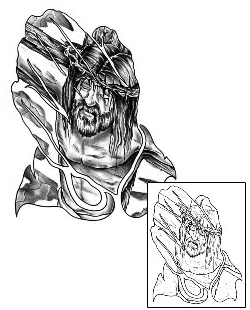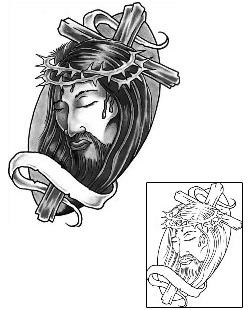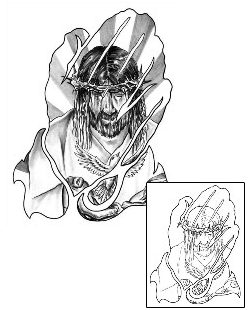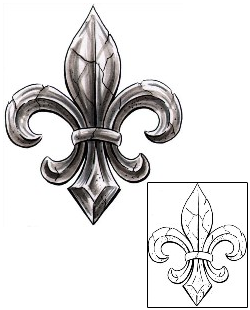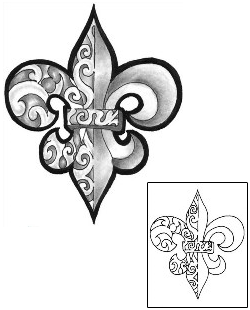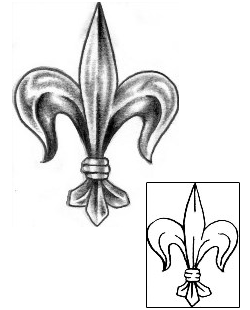Tattooing was a common practice in Europe long before documented history. Prehistoric tattoos and prehistoric tattoo designs were often tribal tattoos, and they were found on icemen and mummies as old as 7000 B.C. in various sites throughout Europe. Prehistoric tattoos in Europe are believed to have some sort of religious and health significance because they were often drawn in long lines following the lines of the body, and many ancient European tribes used strength tattoos and strength tattoo designs and fertility tattoos and fertility tattoo designs to mark passage from boyhood to manhood and from girlhood to womanhood, respectively. As the European tribes evolved into steadier, less nomadic civilizations and began living in documented, organized structures based on social status and power, tattoos were no less evident, but their significance changed dramatically.
Many cultures, including the Romans and later the English, used tattoos to mark the outsiders of their society. Criminals and slaves were branded or tattooed in obvious places with ownership tattoos or with stigmatizing tattoo designs. Other people who got tattoos or who were similarly marked for other reasons were viewed and treated as outsiders just like the criminals and slaves were. Tattoos often indicated a lack of employment or even a lack of viable job skills because it was assumed that if one had time to get tattooed, one had too much spare time. In the eighteenth century, however, the negative connotations that came with tattoos began to change thanks to European sailors who brought the practice back with them from the Pacific Islands. These sailors usually were from Great Britain, which encompassed a large part of Europe at this time. These sailors and their contemporaries believed that they had discovered the art of tattooing abroad because Pacific Island tattoos and Pacific Island tattoo designs were quite different from the stark, unflattering tattoos that Europeans were used to. The Pacific Islanders used their tattoos to beautify the body rather than to indicate some sort of stigma, and they were far more similar to the prehistoric tattoo designs than the ugly, unpleasant brands and criminal tattoos that most Europeans were familiar with. While tattoos and tattoo designs were still largely marginalized at this time, they were slowly becoming more accepted, if not more mainstream.
As tattoo designs became a more common part of the European visual landscape, other countries outside of Britain began adopting their use. In Denmark, family crest tattoos became extremely popular and are part of the popular tradition today. In Greece, spies used specially designed tattoos to indicate their loyalties and their rank. This enabled them to recognize each other and also enabled them to spot enemies in their midst. In many parts of Europe, large, blocky tattoos were still used to identify criminals, certain types of slaves and even certain classes of people, but these tattoo designs were very different from the beautiful and elaborate Pacific Island tattoo designs that were being brought back to Great Britain. Two distinct forms of tattoo designs had emerged at this time, shortly before 700 A.D. Unfortunately, tattoo designs in Europe were about to disappear. In 787 A.D., Pope Hadrian banned tattooing in its entirety. The Pope believed that tattooing violated Biblical principals that forbade Christians from defiling the temple of their body. As a result, he prohibited it in all forms, and people who got tattoos once again became objects of ridicule and scorn in many areas of Europe. Furthermore, Catholics who got them could actually be excommunicated at that time, which lead to further marginalization of people with tattoo designs. If that did not make things hard enough for tattoo artists and tattoo owners, in 1066 A.D. the Normans invaded England, where previously tattoos had become moderately popular. The Normans had a serious cultural aversion to tattoos, and by 1200 A.D. hardly anyone had them anywhere in Europe. They did not begin to reappear (led by sailors example as before) until nearly 1500 A.D.
Of course, today, tattoo designs are quite common in Europe. Men and women of all ages sport tattoos that tell a personal story or indicate a personal triumph. Many seafarers still sport nautical tattoos as well, and enjoy collecting tattoos from around Europe and around the world. Thanks to the internet, people around the world can share, imitate and enjoy tattoo designs from every place on the globe, creating a global tattoo community. As a result, as the years pass European tattoos have become very similar in many aspects from tattoos in other areas of the world, and are identified more by artist than continent or origin.


